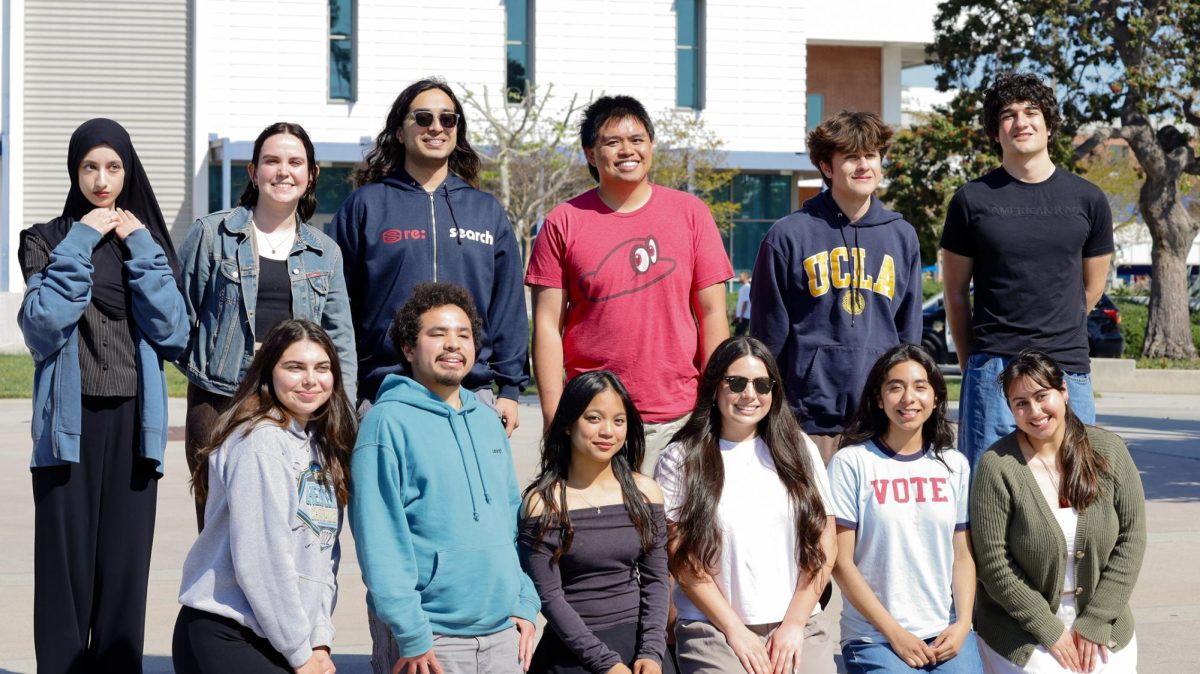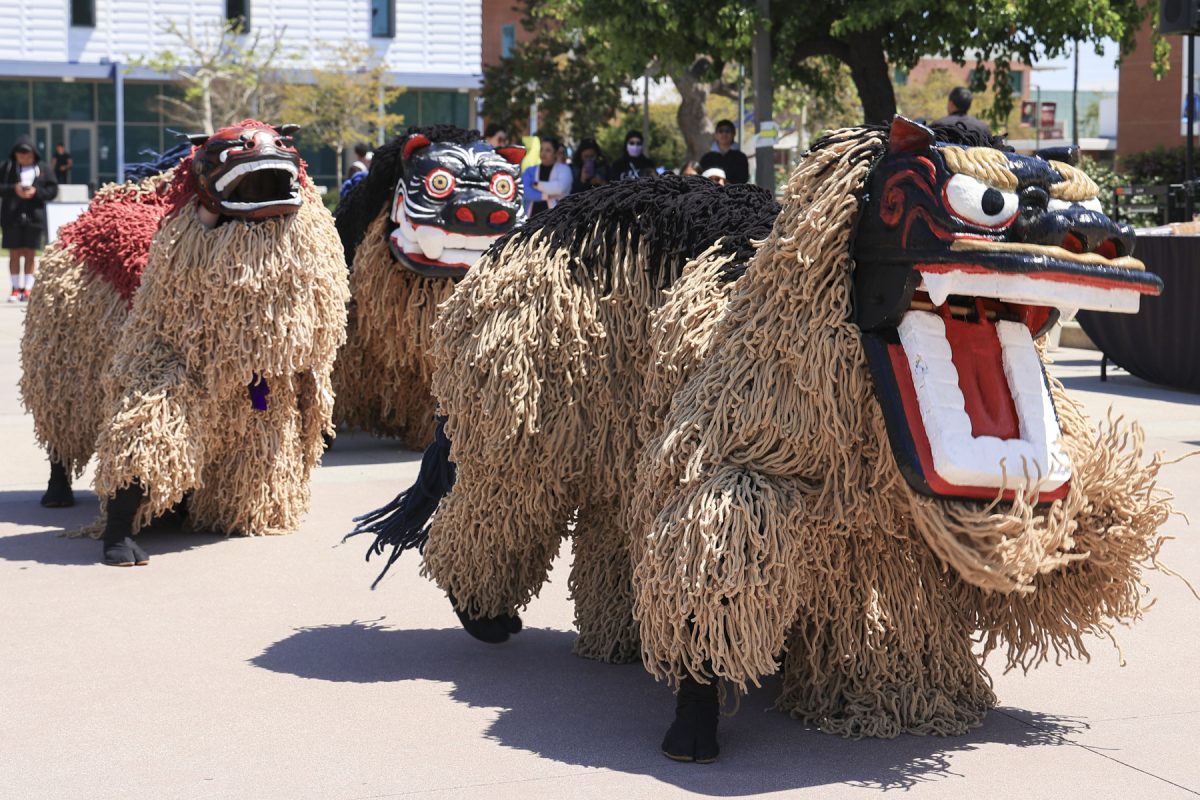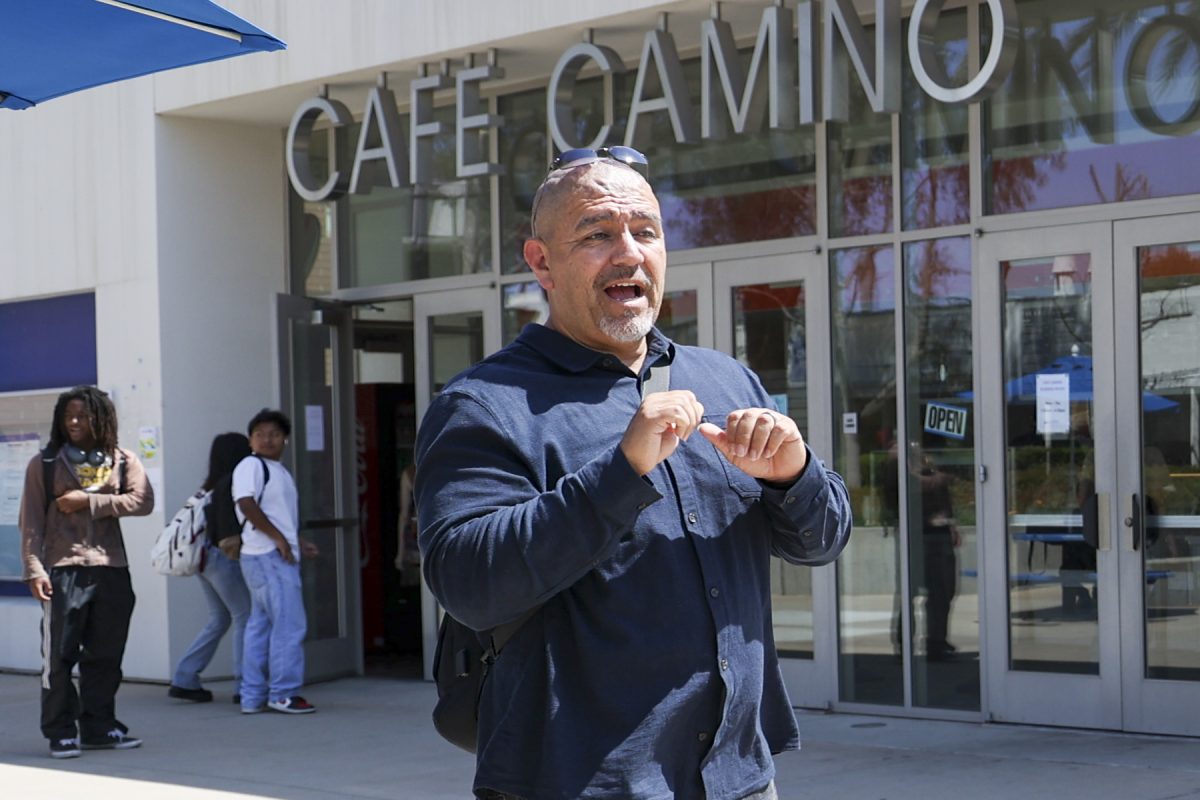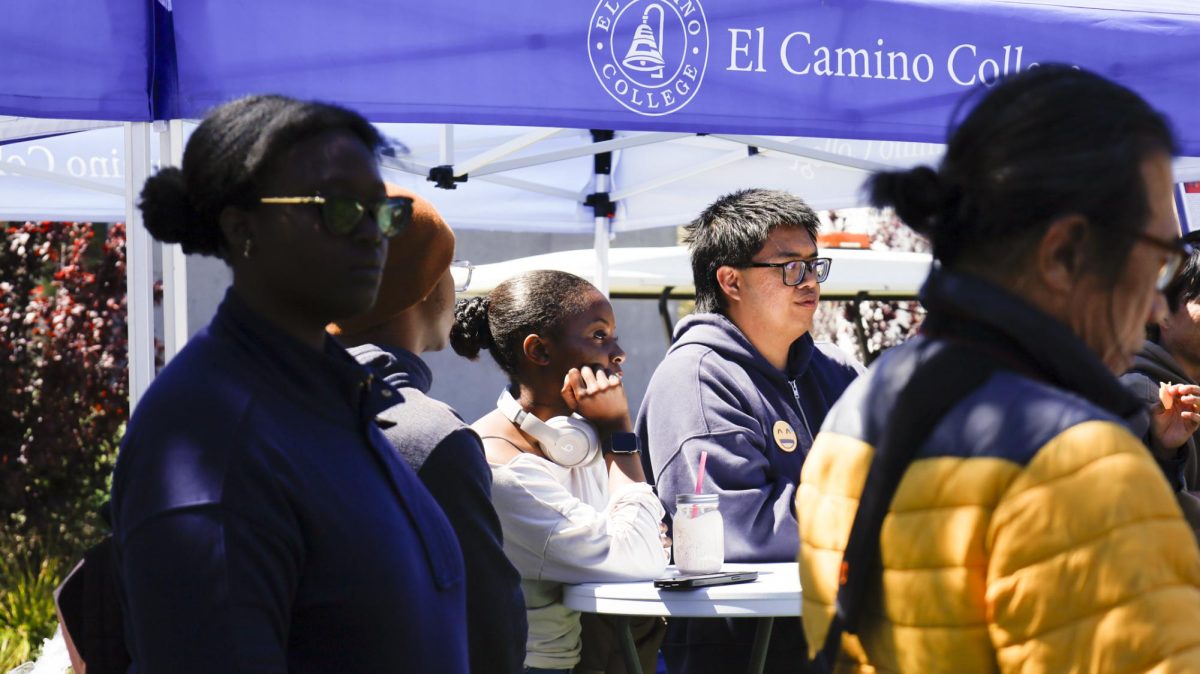
Adam Ravetch puts on his dry suit and diving gear, shivering in the frosty lands of the Arctic. He jumps into a single 3 foot hole cut in the ice.
The water is 28 degrees Fahrenheit, so cold it should be frozen but the salt content keeps the water from freezing.
As he grabs hold of the fully submerged 400-pound IMAX camera, he swims away from the only exit and into the unknown.
“I remember all my expedition in the water,” Ravetch said.
On Monday, April 2, Ravetch presented, “Adventures with Adam Ravetch: Land, Air, and Sea,” in the Marsee Auditorium, the audience was given an insider’s view of his work.
During intermission, his audience was also given the opportunity to ask him questions in the lobby of the auditorium.
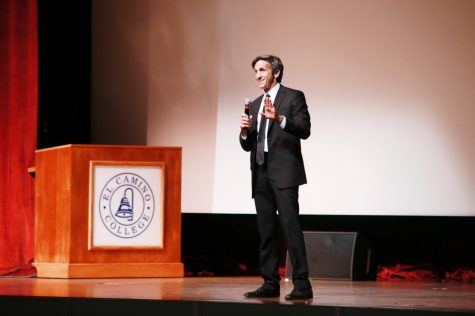
In the second half of his presentation Ravetch screened the film “To the Arctic,” an IMAX original narrated by Meryl Streep and music by Paul McCartney.
Ravetch grew up in the San Fernando Valley, where summers can reach 120 degrees Fahrenheit. His parents built a pool in the backyard.
On the last day of summer at 3 years old after spending all summer on the swim steps, he pushed off and “started dog paddling across the pool,” Ravetch said.
At the age of 13, he asked his parents for scuba diving lessons but they declined.
When he attended San Diego University, scuba diving was offered as a program. He was fortunate to be at the “tail-end” of a generation where scuba diving programs were well funded.

“It cost me $25 a semester for an ‘Air’ fee,” Ravetch said.
The fee paid the maintenance of the air compressor to be filled on campus. He took seven dive courses and became a dive instructor. He taught locally as well as in places like San Diego, Florida, and Saudi Arabia.
He knew his passion was staying physical and staying in the water. The goal was to combine diving and science but in film and that is how he made his first jump.
“My inspiration behind film making stem from my origin of diving,” Ravetch said.
Water is 800 times denser than air. To capture any image or see anything, you have to be close; real close. This forces to connect with the animal and look into their eyes.
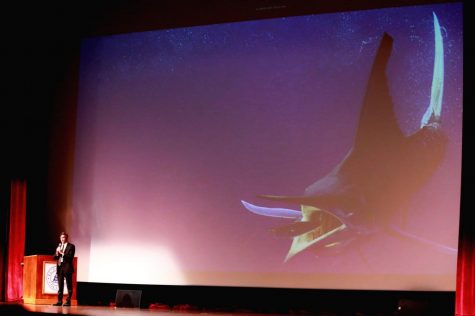
“The animal can be very dangerous, wreak terror, and untold danger into your heart or it could be something really nice and pleasant to be around but nonetheless you get close,” Ravetch said.

Adam Ravetch’s tips for being a filmmaker
Q: What can you tell El Camino Students who want to be wildlife filmmakers?
A: Go to conferences, meet people and then get in anyway way you can. Get in and start working on production. Absorb as much as (you) can. It’s all about connections and it’s still a people business. Like in stories, we’re trying to connect with people, you gotta do that in business.




